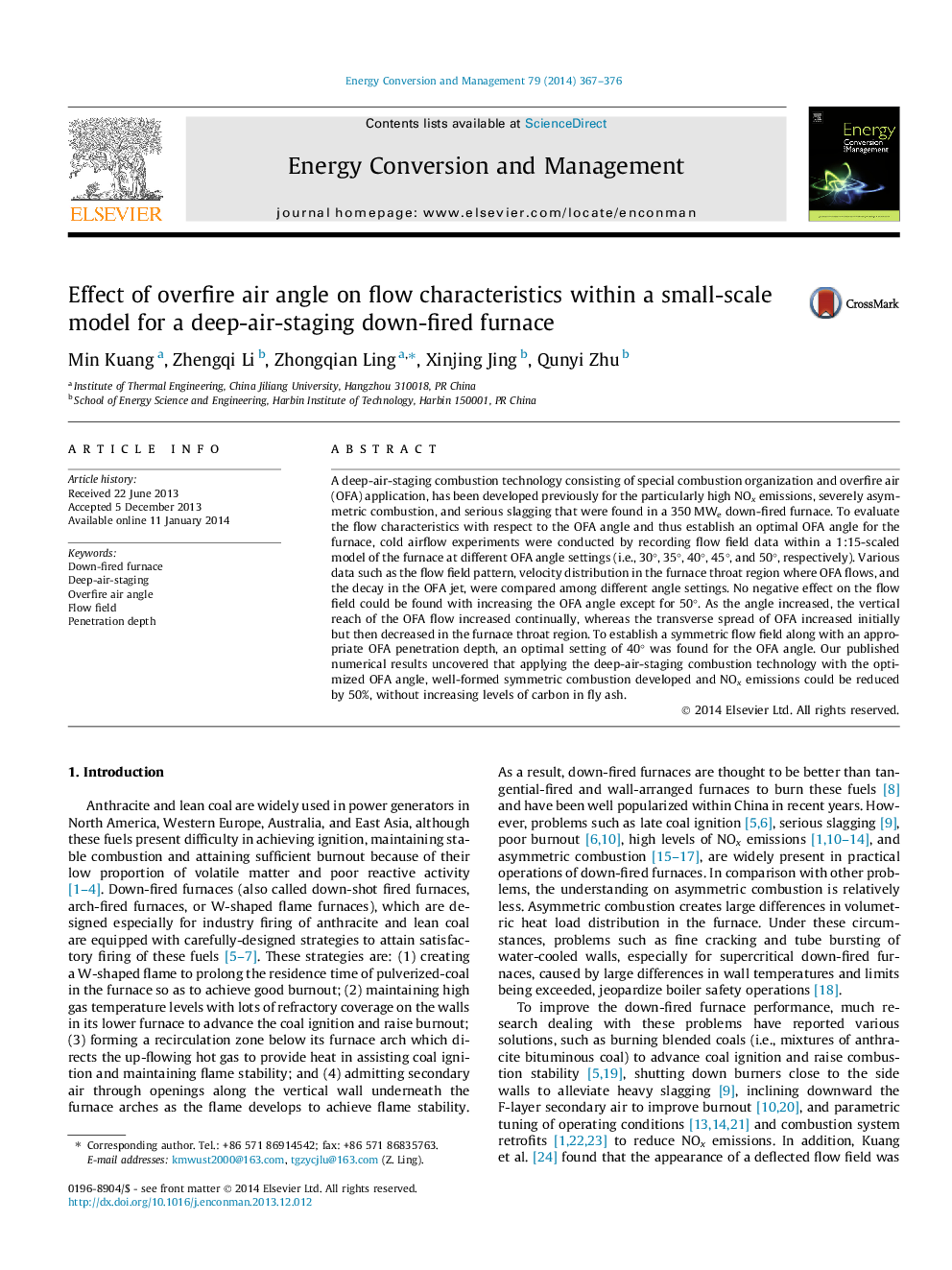| Article ID | Journal | Published Year | Pages | File Type |
|---|---|---|---|---|
| 771990 | Energy Conversion and Management | 2014 | 10 Pages |
•Down-fired furnace suffering from poor combustion performance and high NOx emissions.•Developing a deep-air-staging technology including OFA to deal with these problems.•Evaluating flow fields at different OFA angles by cold modeling experiments.•Determining an optimal OFA angle to be 40°.
A deep-air-staging combustion technology consisting of special combustion organization and overfire air (OFA) application, has been developed previously for the particularly high NOx emissions, severely asymmetric combustion, and serious slagging that were found in a 350 MWe down-fired furnace. To evaluate the flow characteristics with respect to the OFA angle and thus establish an optimal OFA angle for the furnace, cold airflow experiments were conducted by recording flow field data within a 1:15-scaled model of the furnace at different OFA angle settings (i.e., 30°, 35°, 40°, 45°, and 50°, respectively). Various data such as the flow field pattern, velocity distribution in the furnace throat region where OFA flows, and the decay in the OFA jet, were compared among different angle settings. No negative effect on the flow field could be found with increasing the OFA angle except for 50°. As the angle increased, the vertical reach of the OFA flow increased continually, whereas the transverse spread of OFA increased initially but then decreased in the furnace throat region. To establish a symmetric flow field along with an appropriate OFA penetration depth, an optimal setting of 40° was found for the OFA angle. Our published numerical results uncovered that applying the deep-air-staging combustion technology with the optimized OFA angle, well-formed symmetric combustion developed and NOx emissions could be reduced by 50%, without increasing levels of carbon in fly ash.
